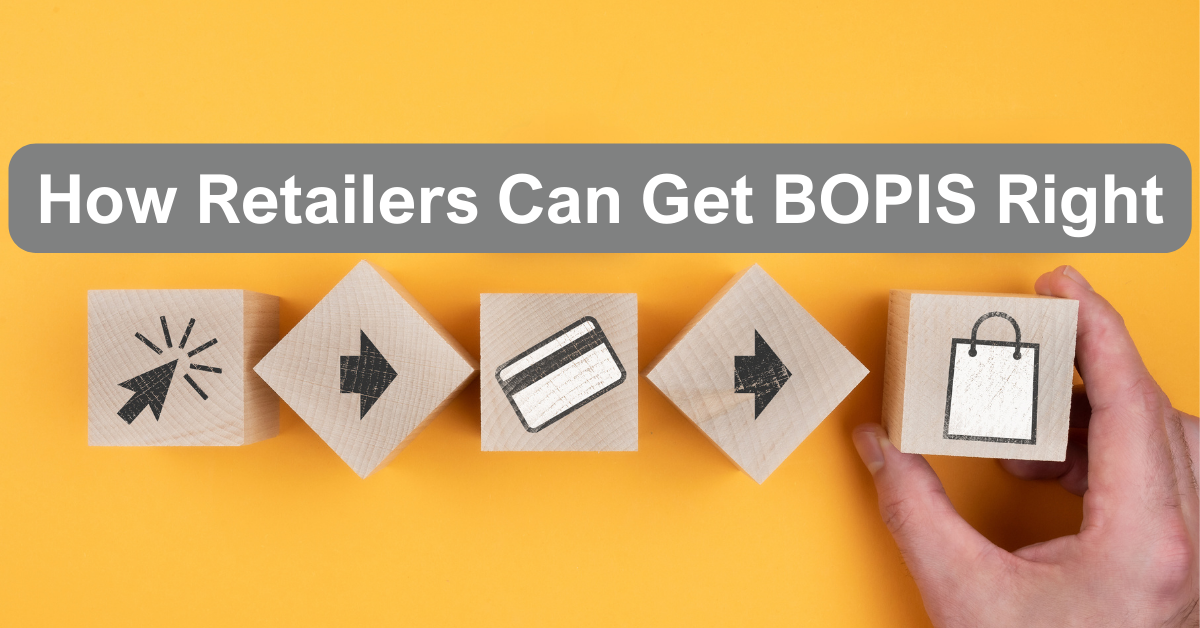


Buy online, pick-up in store (BOPIS) is a huge hit with retail customers. No shelf hunting, no driving to the store wondering if an item is in stock, no waiting in the checkout line and no paying delivery fees. It gives people access to the best aspects of the ecommerce and brick-and-mortar shopping experiences. It’s so convenient that a 2023 study by PYMNTS identified a 37% YoY increase in the number of U.S. consumers picking up their orders. Traditional ecommerce delivery orders, on the other hand, dropped by 11% in the same time period. BOPIS, also known as click-and-collect, is gaining ground.
For retailers, this is another indicator that the customer experience should be at the core of everything. And the customer experience is best enabled through omnichannel offerings. Most retailers have figured this out, but they haven’t all figured out BOPIS yet. However, shoppers in the US are expected to spend over $150B on BOPIS orders by 2025. If your store doesn’t have a solid click-and-collect channel, that’s a large opportunity you’re leaving on the table.
Numbers aren’t the only reason retailers should make BOPIS a part of their portfolio. When done correctly, click-and-collect creates a seamless screen-to-store experience that boosts customer loyalty. BOPIS removes the negative aspects of in-store shopping like waiting in line for checkout while capitalizing on the ease of ecommerce. For retailers, BOPIS is great because it requires zero shipping and creates the opportunity to upsell when a customer enters the store to grab their order, further boosting potential profits. So, what’s stopping every business from creating a great BOPIS program?
The primary barrier to getting BOPIS up and running is meeting customer expectations. Since BOPIS orders utilize both an online catalog and a physical store, fulfilling them requires retailers to have both working in top condition with real-time data shared between the two. It sounds relatively easy, which is the same thing an upset customer will tell your associates if you get it wrong. While BOPIS doesn’t require you to promise your customers the moon, it does require you to promise them their pink hairbrush is in stock. And that you’ll have it ready for them when they come to pick it up. Getting everything right requires a strong omnichannel infrastructure, but it’s worth the investment.
If you’re considering click-and-collect, you’ve probably already got a solid ecommerce shopfront and a good physical store. The key to making this offering available is connecting the two and gaining full visibility into your inventory. The best way to achieve this is through software that emphasizes inventory management.
To make sure your BOPIS customers are consistently delighted, you need accurate, up-to-date knowledge on what you have in your store. The best candidate for bringing you this information is RFID. RFID technology has seen a recent resurgence due to a variety of factors, and it’s perfect for this task. When combined with the right software, RFID grants retailers near-exact knowledge of their inventory. Done right, it can even tell you the precise locations of items in the store. With this information, you can offer click-and-collect without the fear of accidentally selling a product online that already walked out the door.
This level of accuracy requires AI-enabled software that can read the data and automatically update it at frequent intervals (ideally every 15 minutes or so). If you can push inventory accuracy above 98%, it becomes much easier to offer BOPIS to your customers. At this level of accuracy, you’ll experience fewer order rejections and faster fulfillment times. With this knowledge, your associates can find items fast, which also lowers the cost of fulfillment. In short, using AI and RFID together brings down both the top and bottom lines and primes your store for memorable click-and-collect experiences.
RELATED WATCH: Robotics in Retail with Akash Gupta
It’s possible to enable these benefits with disparate systems, but you would need to do custom integration work to keep them from becoming siloed. The custom integration route requires maintenance, specialists and labor to keep everything running smoothly. By choosing a platform that supports AI + RFID integration and omnichannel operations from day one, you can start from a strong position.
In addition to keeping track of inventory, these capabilities also contribute to better merchandising. AI can use the data pulled from real-time sales to help retailers make better decisions. It can show you which items to display more prominently, which items are selling together, and more to help boost sales. Appropriate merchandising makes it more likely that a BOPIS customer will grab something else while they’re in store, too.
To recap, adding BOPIS to your repertoire or improving the way you handle it is always a good idea. Your customers are looking for this offering anyway, and building the infrastructure to support it strengthens your business. In some ways, BOPIS is a test. If you can offer it with high customer satisfaction, you can be confident that your omnichannel operations are running smoothly.